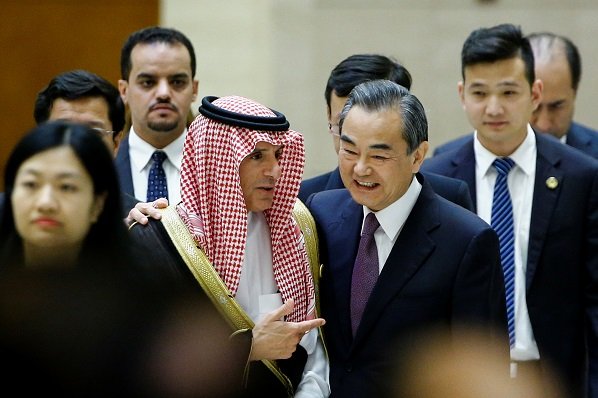
Chinese Business Giants Shift Focus to Middle East Markets
Chinese businesses are flocking to the Middle East at an unprecedented rate. Latest data shows that 90% of Chinese companies aim to grow their presence in the region. This marks a key strategic change as businesses look for new markets amid evolving global conditions. A PwC study of 136 Chinese firms reveals that 44% have concrete plans to expand in the Middle East, showing a notable uptick since 2022.
The results speak for themselves. Chinese enterprises report a 40% success rate from their Middle East ventures. Only 15% of firms now face losses. Saudi Arabia and the United Arab Emirates stand out as prime investment destinations. These countries attract 84% and 79% of surveyed companies respectively. The UAE has emerged as China’s second biggest trading partner and leads Arab nations in Chinese exports and investments as of 2024.
Dubai alone hosts more than 8,000 Chinese companies. This robust economic partnership showcases China’s overseas investment strategy and the Middle East’s push toward economic diversity. The Saudi Vision 2030 complements Chinese industrial capabilities perfectly. The UAE’s strong non-oil economic growth, which has topped 6% yearly from 2021 to 2023, creates an ideal environment for foreign investors.
Chinese firms accelerate shift to Middle East markets
Image Source: Middle East Institute
“Chinese enterprises are accelerating their expansion into the Middle East, with nearly 90% planning to grow operations in the region, according to PwC’s latest survey of 136 Chinese firms.” — PwC Middle East Research Team, PwC Middle East, leading global consulting firm
Chinese businesses are moving away from traditional markets and heading to the Middle East. This shift shows a new direction as global dynamics change. Companies now question their dependence on China due to growing political tensions, COVID-19 disruptions, and tariff issues. Foreign direct investment in China turned negative during 2023’s third quarter – a first-time occurrence.
Why Chinese companies are leaving traditional markets
Chinese companies now prefer a “China+1” approach. They look for countries with stable political relationships that sit close to major markets. China’s exports to the U.S. dropped 8% since 2017, pushing its companies to search for new markets. Chinese firms now operate full entities in the Middle East instead of just having representative offices. About 77% of these companies serve local markets directly.
How geopolitical tensions are reshaping investment flows
Research shows that tensions between the U.S. and China discourage new investments. Money flowing into China weakened after Russia invaded Ukraine. Foreign direct investment also slowed down. These changes suggest China might be experiencing financial isolation. Chinese businesses found success in the Gulf region where profits improved. Only 15% of firms now report losses.
What the Belt and Road Initiative means for the Gulf
The Belt and Road Initiative (BRI) is a vital part of China’s relationship with the Middle East. Gulf states weren’t on the original BRI maps, but China added them because of their strategic value. President Xi called Arab countries “natural cooperation partners” for the BRI. Regional development plans like Saudi Arabia’s Vision 2030 and UAE’s Development Strategy work well with this initiative.
The Gulf serves as a strategic center for the BRI. China depends more on energy from this region each year. GCC states supplied 210 million tons of oil to China in 2022 – about 41% of China’s total oil imports. Major projects include Saudi Arabia’s Neom City, Dubai’s Al-Maktoum Airport expansion, and Qatar’s Integrated Rail Project.
Saudi Arabia and UAE attract majority of Chinese investment
Image Source: Fortune Business Insights
Saudi Arabia and UAE stand out as prime destinations for Chinese investments. These countries have captured the attention of 84% and 79% of surveyed Chinese companies respectively. This surge in investment shows how Chinese capabilities match regional economic priorities perfectly.
Saudi Vision 2030 matches Chinese industrial strengths
Saudi Arabia’s Vision 2030, a complete economic diversification plan, creates perfect synergy with China’s industrial capabilities. The Kingdom has become China’s biggest trading partner in the Middle East, with trade between both countries reaching $100 billion in 2023. Saudi Arabia leads as the top destination for China’s Belt and Road Initiative (BRI) energy projects, with investments of $30 billion. We focused on petrochemicals, minerals, semiconductors, and automotive manufacturing. The automotive industry received $5.6 billion for original equipment manufacturing, while $5.26 billion went to the minerals sector.
UAE’s free zones and tax incentives appeal to tech and finance sectors
UAE ranks as China’s second-largest economic partner in the region. More than 15,000 Chinese companies now operate in sectors of all sizes within the Emirates. The China-UAE Industrial Capacity Cooperation Demonstration Zone in Abu Dhabi’s Khalifa Industrial Zone has secured investments worth $1.6 billion. Chinese investment in UAE grew by 16% last year. UAE contributed 90% of all Arab investment into China in 2023.
Chinese investment by country: Middle East vs India and USA
Saudi Arabia leads global recipients of Chinese construction volume in 2024 with $18.9 billion. Iraq follows with $9 billion and UAE with $3.1 billion. Chinese investment in traditional destinations has decreased, as Saudi Arabia now outperforms both India and USA as the preferred investment destination.
Chinese companies target high-growth sectors in the Gulf
“Chinese investors are diversifying into fast-growing sectors including digital technologies, renewable energy, artificial intelligence and biopharmaceuticals, aligning with both the region’s diversification plans and China’s global innovation drive.” — PwC Middle East Research Team, PwC Middle East, leading global consulting firm
Chinese businesses are expanding faster into promising sectors in Gulf countries to line up with the region’s ambitious economic transformation goals. Chinese investors now focus on growing industries that complement regional diversification plans and China’s global breakthrough priorities.
Digital economy and AI lead the charge
Chinese AI companies have built a strong presence in the Middle East digital world. SenseTime opened an EMEA R&D headquarters in the UAE and plans to create hundreds of jobs for highly skilled engineers. These firms adapt technologies to local cultural norms. WeRide, for example, developed “Hijab mode” for its robotaxis. Today, 77% of Chinese companies serve local markets through full entities instead of representative offices.
Green energy and biopharma gain traction
Chinese companies invested about $9.5 billion in green projects throughout the Middle East between 2018 and 2023. Saudi Arabia has imported more solar panels for large-scale regional projects. The investors also target biopharmaceuticals, which lines up with both the region’s diversification plans and China’s global breakthrough agenda.
Advanced manufacturing and logistics hubs emerge
About 40 Chinese firms will set up manufacturing plants at the China-UAE Industrial Capacity Cooperation Demonstration Zone in Abu Dhabi, with $10 billion in current investments. These projects support the Belt and Road Initiative. Chinese logistics giant J&T Express entered the Middle East and shows steady business growth of 25% yearly.
Tourism, real estate, and esports offer new frontiers
The UAE hosted over a million Chinese tourists in the first ten months of 2023. Gaming presents another chance for growth, with KSA and UAE making up 80% of the region’s $2.24 billion player spending in 2023. Abu Dhabi builds the world’s first Esports Island, a $1 billion mixed-use hub with workspaces, training complexes and multi-format arena.
Policy reforms and localization shape business strategies
Image Source: LinkedIn
Chinese businesses face complex challenges when they expand into Middle Eastern markets. Their success depends on how well they adapt to regional policies and regulations.
How Saudization and Emiratization affect hiring
The Gulf region’s nationalization programs require companies to hire a specific number of local citizens. Companies that don’t meet these targets risk penalties and restrictions on their foreign worker permits. Hiring Saudi employees comes with its own set of challenges. Managers can’t easily dismiss or criticize Saudi workers for poor performance without legal consequences. Smart companies hire Saudi women for administrative roles to reduce costs and meet their quotas simultaneously. The UAE’s rules are more flexible with local hiring quotas at just 2%. Saudi Arabia’s localization requirements are much stricter in comparison.
Taxation, transparency, and regulatory hurdles
Many Chinese companies struggle with local regulations. Research shows that all but one of these businesses point to this as their biggest problem. Saudi Arabia charges foreign companies a 20% corporate income tax, while locally-owned portions pay only a 2.5% Zakat tax. The UAE now has a 9% corporate tax on profits above AED 375,000 since 2023. Qualified free zones still enjoy 0% rates. The UAE-China Double Taxation Treaty limits withholding tax on dividends and interest to 7%.
Cultural adaptation and branding challenges
Chinese companies that combine efficient operations with Saudi relationship-building practices see better employee satisfaction and retention. Muslim employees work six-hour days during Ramadan with full pay. Companies that embrace local culture thrive here. Chery’s prayer compass in vehicles shows that “Made in China” can truly mean “Made for You”.
Chinese companies see Middle Eastern markets as the key to their worldwide growth plans. These businesses are seeing a soaring win in the region. Their loss-making ventures have dropped to just 15%. Saudi Arabia and UAE lead as top choices, drawing 84% and 79% of surveyed Chinese businesses.
The shift eastward shows today’s economic reality. The Belt and Road Initiative has without doubt strengthened China’s foothold in Gulf states. This matches perfectly with local growth plans like Saudi Vision 2030. Chinese firms now view these markets beyond just energy supply hubs. They see them as growing economies ready to embrace new technology.
Chinese investment flows into many different sectors, which shows how deep this partnership runs. Chinese companies have positioned themselves in fast-growing industries from digital tech and AI to clean energy and biopharmaceuticals. Both sides win – Gulf nations speed up their economic diversity while Chinese businesses find new revenue sources outside their usual markets.
Market success here just needs a full picture of local rules. Companies should adapt to each country’s hiring policies, tax systems, and cultural practices. Businesses that become skilled at handling these challenges gain a real edge over competitors.
This economic partnership between China and the Middle East looks set to grow stronger. As worldwide trade patterns shift, these deepening ties mean more than just a passing chance. They point to a basic shift in global business relationships that will shape trade for decades ahead.




